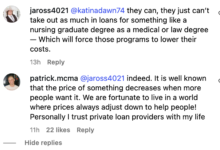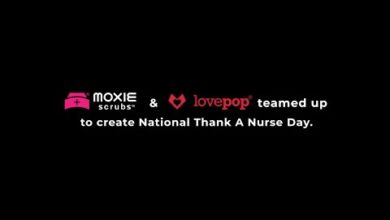Dear AMA: Invest in Partnership, Not Smearing Nurses, to Improve Patient Care

This is an opinion article, written by Desireé Clement, DNP, APRN, CNM, FNP-BC, FACNM, FAANP, FAAN
As a nurse of almost 30 years, I would like to share my thoughts on the American Medical Association’s (AMA’s) smear campaign focused on nursing scope of practice, called “Fighting Scope Creep.” The AMA refers to “scope creep,” as any legislative effort aimed at expanding the scope of practice for non-physicians within healthcare. For instance, the campaign advocates against the growing national movement to modernize outdated laws and regulations that maintain undue restrictions on Advanced Practice Registered Nurses (APRNs’) practice. The AMA claims that lifting restrictions could cause issues with patient safety.
Nurses and Physicians Should Collaborate
Nurses and physicians are aligned in our desire to provide exceptional care. Thus, the AMA’s campaign may be a genuine and well-intentioned effort to protect patients. However, in my opinion, it is ultimately misguided and instead perpetuates barriers to care for many people and communities. Instead of actively working to restrict qualified healthcare providers like APRNs, the AMA should consider partnering with nurses. Together, we could funnel our talents and resources toward solving the root cause of many urgent health issues in the US. Namely, issues like rural hospital closures, mental health crises, and the preventable deaths of pregnant people and babies all share a common thread: Too often, people cannot access qualified healthcare providers in moments of great need.
What some physician colleagues may not realize, however, is that in many areas there are enough qualified clinicians; but, due to the onerous practice restrictions in some states, nurses and APRNs are unable to fully practice as we have been taught.
APRNs are ready and willing to provide care in rural and marginalized communities where care gaps and disparities persist. As an APRN who is both a Family Nurse Practitioner and a Certified Nurse Midwife, I am trained to prescribe schedule II medications, which include those used to treat pain, anxiety, and insomnia. I also know how to order home health services when necessary. However, in Georgia, where I currently reside, I am not allowed to prescribe Schedule II medications or order home health services. Uniformed state laws add layers of frustration and confusion to care for many people who are just trying to access the medications and services they need.
I ask my friends and colleagues at the AMA: In communities where no physicians are working, isn’t it better to have at least one APRN who can fully practice to their level of training versus no clinician at all?
APRNs bring desperately needed relief to a weakened US health system and a healthcare workforce that is still recovering from pandemic labor shortages and burnout. APRNs are prepared to assess, diagnose, manage patient problems, and prescribe treatments if necessary.
The AMA suggests APRNs are not as competent in these functions, citing fewer years spent in clinical training than physicians. Yes, physicians spend more years in training, but that does not equate to APRNs being unqualified or unsafe in their roles. We are trained as APRNs not as physicians, and we bring extraordinary value as such. Likewise, physicians are not trained to be APRNs, and the boards of medicine lack the nursing knowledge to regulate nurses; this is why we still have boards of nursing.
APRNs do not seek to be or replace physicians. We are proud to be APRNs. Our wish is simply to respond to our patients’ and communities’ needs with the care they deserve. The care we know how to give. Regardless of where APRNs are trained, we learn how to practice within a well-defined scope of practice, set by our national certifying exam bodies. It is only when we enter practice that some states, in turn, arbitrarily place limitations on our state licenses. These limitations restrict our ability to perform certain skills permitted under the national certifications we have obtained.
There is growing evidence to show the excellence of care delivered by APRNs:
- For example, care provided by nurse practitioners results in fewer unnecessary hospital readmissions and higher rates of patient satisfaction, compared to that of physicians.
- APRNs’ patients also experience fewer unnecessary emergency room visits.
- Despite more than a decade of evidence showing APRNs provide excellent care equal to or exceeding that of physicians—and carry a low rate of malpractice claims—the AMA continues to advertise how APRNs require more oversight by physicians.
It is not just the literature base that endorses APRNs.
- The National Academy of Medicine, the Veteran’s Administration, and at least 27 state legislatures understand APRNs’ care delivery does not require added physician oversight.
- Furthermore, it is well-documented that patients put great trust in nurses and APRNs. In fact, for the 22nd year in a row, nursing has been named the most trusted profession in the US.
Primary care access in the US is inadequate for almost 100 million people. Coupled with an aging baby boomer population, there are droves of people who right now are not receiving the care they require. APRNs can help patients to be seen earlier, which can save costs and lives. In healthcare, we are all in this together. There are enough patient care needs for all clinicians to have a full patient load, plus a multitude of opportunities to transform how we deliver care together. We have contacted the AMA to provide a statement and will update the article once received.







